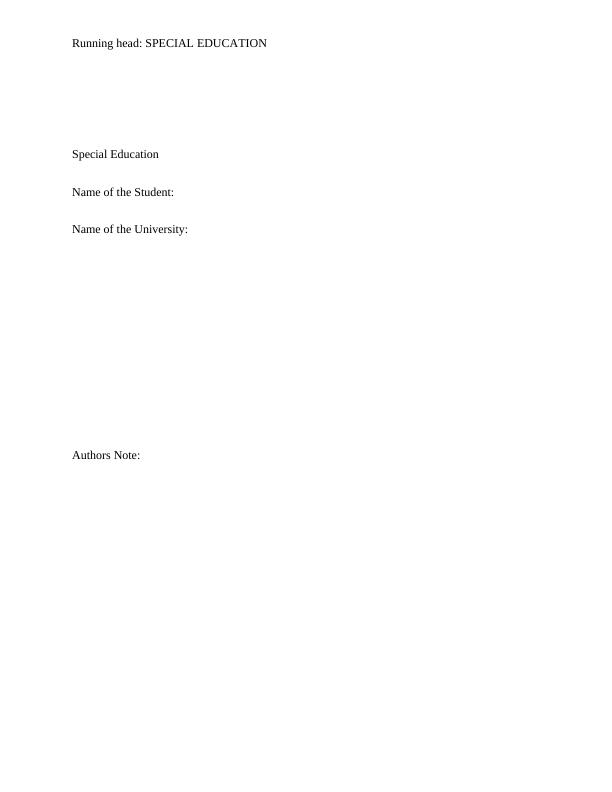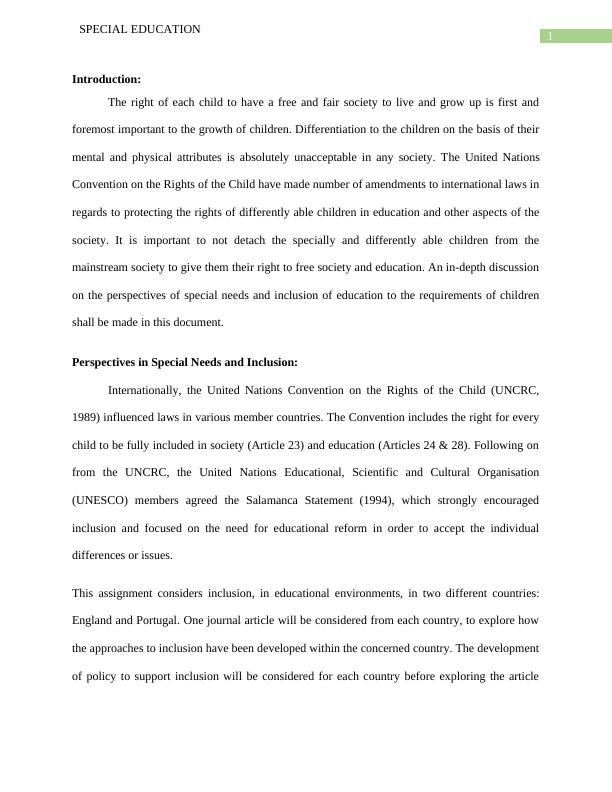Perspectives in Special Needs and Inclusion in Education
This assignment explores the development of inclusion in educational environments in England and Portugal, using journal articles from each country to compare different approaches to inclusion.
16 Pages4614 Words467 Views
Added on 2023-05-30
About This Document
This document discusses the perspectives of special needs and inclusion of education to the requirements of children. It explores the importance of relationships as a key factor in supporting inclusion. It also talks about the issues, challenges and dilemmas of inclusive education.
Perspectives in Special Needs and Inclusion in Education
This assignment explores the development of inclusion in educational environments in England and Portugal, using journal articles from each country to compare different approaches to inclusion.
Added on 2023-05-30
ShareRelated Documents
End of preview
Want to access all the pages? Upload your documents or become a member.
Importance of Children's Rights in Early Childhood Studies
|8
|1583
|387
Early Childhood Education Journal
|8
|2452
|101
Child Abuse Eradication: Policy and Legal Framework in UK
|7
|2182
|89
Childhood Education: Theories and Importance of Early Childhood Development
|11
|3320
|433
Does the Convention Undermine Parental Rights?
|3
|713
|77
(PDF) Childcare Assignment
|8
|1192
|110




